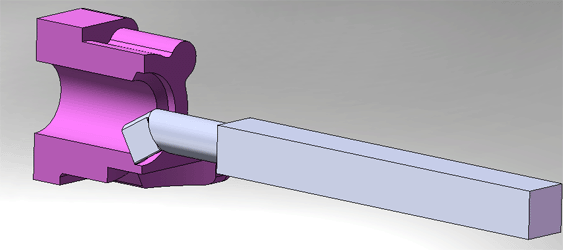

 Master's portal of DonNTU
Master's portal of DonNTU

Upgrading details of machines always was the major task of engineering. One of the perspective ways of upgrading treatment is the usage of treatment of materials by thin sharpening.
A research object is cabinet-type details; in particular the detail will be examined from cast-iron "Block of cylinder", to the surface of bore of which great demands are made.
Most efficiency of application of the thin sharpening is possible at the correct, optimum choice of the cutting modes, charts of treatment, geometry and construction of instruments. For the decision of these tasks establishing a connection is needed between operating properties and parameters of superficial layer of details.

Development of recommendations on the choice of the optimum modes of cutting, development of mathematical model for the calculation of optimum terms of treatment, necessary for a decision tasks of providing of quality of treatment of details from cast-iron and determine actuality of this master's degree work.
Purpose of work - to promote the productivity and quality of treatment of details of machines due to the choice of rational terms of the use of the modern instrumental materials.
One of the most widespread methods of optimization presently is a method of the linear programming [1, 2, 3], allowing carrying out simultaneous optimization of speed of cutting and serve, taking into account limitations on the criterion of burst performance. In spite of simplicity and obviousness, this method does not allow deciding the task of optimization of the cutting modes in the case of nonlinear objective function, which is a prime price of treatment of details.
Such failing the method of the geometrical programming (MGP), which can be used for the decision of tasks of optimization of the modes of cutting at the use of instruments from UHM, is deprived. Purpose of the presented work – to define the optimum cutting modes, providing the minimum prime price of treatment at the set level of quality of the treated surface at the thin sharpening with the usage of cutting tools, equipped by el'bor borazon material –P.
As a result of decision tasks are determined optimum serve of SO and speed of cutting of VO on these formulas:

For a example, we’ll give the determinations of the optimum modes of cutting, providing a minimum prime price, for lathe treatment of hard-tempered instrumental steel Р18 (HRC 62-64) on a lathe-screw-cutting machine-tool with PNC 16К20Ф3.
As a result we will get the next information Sо = 0,084 mm/s, Vо = 54.2 m/pm.
On the basis of the developed method conformities to law of change of optimum values of serve and speed of cutting from the roughness of the treated surface and radiuses are set at the top. The developed method of determination of the optimum modes of cutting can be widely used for any types of treatment.
At writing of this abstract of thesis master's degree work is not completed. The completion is planned on December, 2010.